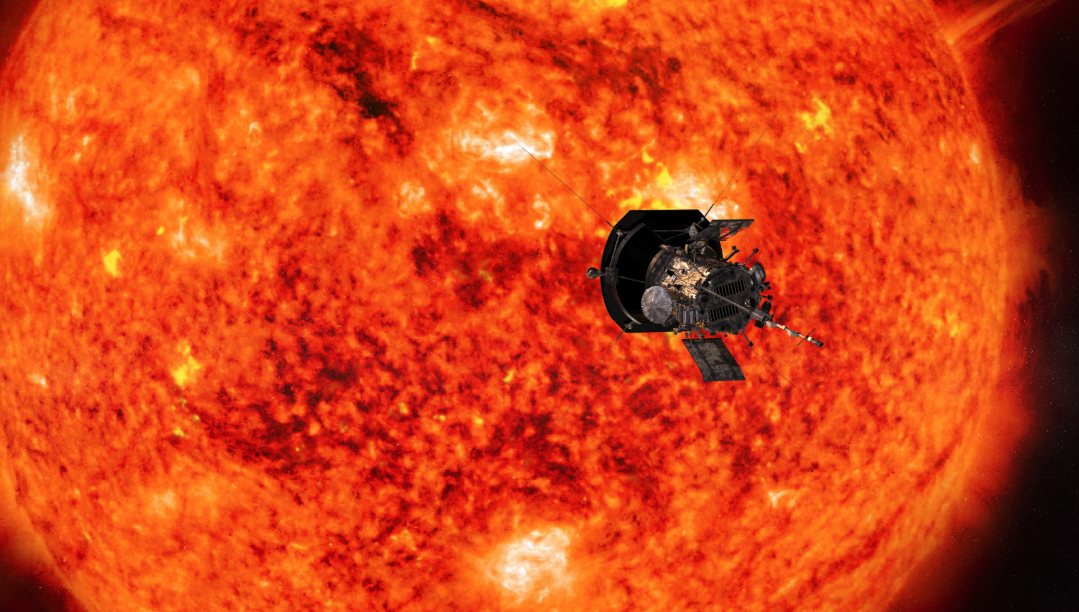NASA's Parker Solar Probe starts sun observation marathon

NASA's sun-grazing spacecraft is gathering the most data ever on its upcoming skim past our star, with instruments turned on for nearly two months.
Parker Solar Probe launched in August 2018 for a seven-year mission studying the sun by flying deeper into its outer atmosphere, called the corona, than any previous spacecraft has. When the mission launched, scientists expected the instruments on board to gather data for about 11 days on each flyby.
But the spacecraft has been faring better than expected, and scientists began increasing the duration of observations on successive orbits. And during those extra observations, scientists began seeing very strange phenomena in the stream of charged particles flowing off the sun, called the solar wind, farther away from the sun. Hence the additional extension for this flyby. Observations began on May 9 and will continue through June 28, mission team members said
Related: See the sun flip out in wild new satellite view
"We have a real opportunity here to see what's going on in these regions further from the sun's corona," Nour Raouafi, Parker Solar Probe project scientist at the Johns Hopkins Applied Physics Laboratory, said in a NASA statement.
"While our primary goal is to understand the mysteries at the sun's corona and the 'young' solar wind closer to the sun, there is evidence indicating very interesting physics to explore earlier in the orbit and link that to what occurs near the sun," Raouafi said. "We have the capability to gather this data and see what it yields."
So, on this flyby, Parker Solar Probe turned on its instruments while it was still 62.5 million miles (101 million kilometers) away from the sun, or nearly three times more distant than on a typical flyby. Now, scientists have to wait: Parker Solar Probe is pretty taciturn during flybys, and the spacecraft won't send its data home until late summer.
Breaking space news, the latest updates on rocket launches, skywatching events and more!
The spacecraft will make its closest approach this orbit on June 7, when it will be about 11.6 million miles (19 million km) away from the sun. As its mission continues, Parker Solar Probe's closest approach will move ever closer to the sun; by the end of the mission, the spacecraft will be just 4 million miles (6 million km) away from our star.
In order to get that close, the spacecraft must make successive loops past Venus, and after next month's closest approach, Parker Solar Probe will do just that on July 11. During that maneuver, the spacecraft's instruments will study Venus, including catching an 11-minute eclipse, according to the statement.
- NASA's Parker Solar Probe mission to the sun in pictures
- What's inside the sun? A star tour from the inside out
- NASA sun probe spies the solar wind in 1st birthday photo
Email Meghan Bartels at mbartels@space.com or follow her @meghanbartels. Follow us on Twitter @Spacedotcom and on Facebook.
OFFER: Save 45% on 'All About Space' 'How it Works' and 'All About History'!
For a limited time, you can take out a digital subscription to any of our best-selling science magazines for just $2.38 per month, or 45% off the standard price for the first three months.

Meghan is a senior writer at Space.com and has more than five years' experience as a science journalist based in New York City. She joined Space.com in July 2018, with previous writing published in outlets including Newsweek and Audubon. Meghan earned an MA in science journalism from New York University and a BA in classics from Georgetown University, and in her free time she enjoys reading and visiting museums. Follow her on Twitter at @meghanbartels.

